Running while losing weight
When it comes to the fight against excess weight, everyone immediately thinks of morning or night jogging. Those who doubt whether it is possible to lose weight through running can look into any training program and see that this is a mandatory item in all complexes. This can be jogging on a treadmill or outside at any time of the year. It should be understood that it is not the fact of daily cross-country that affects weight loss, but the adjustment of nutrition and increased calorie burning. Running for weight loss is the main tool for accelerating metabolism in the human body.
How does running affect weight loss?
To evaluate the help of jogging in losing weight, it is necessary to understand the processes that occur in the human body. Weight gain occurs due to the fact that a person consumes more calories than they burn in a day. The body turns excess elements into “reserves”, which are deposited on the waist, buttocks and thighs. In order for these deposits to be used, energy costs need to be increased. This is the answer to the question of whether running helps you lose weight.
When a person begins to train his body, there is a need for additional energy supply. First, it extracts energy from carbohydrates, then the body begins to break down fat. Running affects weight loss by increasing energy consumption, but the duration of the session must be long for the “Queue” to reach fat deposits.
What makes you lose weight when running?
Some beginners set a goal to lose weight in a specific place. The body immediately loses weight everywhere, and not in individual parts, but sometimes some areas reduce fat faster (this is an individual characteristic of each person). Therefore, the answer to the question of what loses weight when running is everything: arms, legs, waist, chest, back and buttocks. The fat burning process affects all parts of the body, promotes overall weight loss and volume reduction.
Jogging in the morning
A great way to get rid of extra pounds is to combine diet and running to lose weight. But don't rush outside immediately after waking up. Drink a glass of warm tea or water, give your body five minutes to wake up, get dressed and put on shoes appropriate for the weather.
An additional advantage will be the use of a Vulcan-type weight loss belt. It is inexpensive, but its effectiveness has been tested more than once.
Benefits of running in the morning:
- promotes rapid weight loss;
- accelerates metabolism and metabolic processes in the body;
- strengthens immunity and character;
- adds self-esteem and self-confidence;
- trains the cardiovascular system and lungs;
It should be borne in mind that no matter how much and in what place you run (at home, in the gym or on the street), your clothes in winter or summer will have to be washed after each workout, so they must be appropriate. If you are the daughter of a millionaire, you can run in branded Adidas, but I prefer an inexpensive and lightweight sports suit of dubious production, which I don’t mind saying goodbye to in a few months. A T-shirt or top should be comfortable and made from natural materials. Shoes need to be trimmed correctly. Even sneakers are suitable for running on dirt or a special treadmill, but in all other cases you just need to wear sneakers with soft, shock-absorbing soles. Otherwise, you can develop problems with joints and ligaments.
After going outside, do not rush into a gallop. If you have somewhere to run near your house, that’s great, but don’t forget about warming up. To start, you need to walk for about five minutes at an average pace. Then do a few squats and side bends. Then start running at a slow pace.
Running efficiency
Of course, like other means for losing excess weight, running cannot give one hundred percent results. However, most reviews of running for weight loss involve people sharing positive experiences, primarily after running outdoors.
But it is not only the supply of oxygen to the tissues that contributes to this result. It is much better to burn fat and restore health if you follow a diet, remove fatty and unhealthy foods, in other words, eat right.

Advice! It is not necessary to strictly limit yourself in nutrition. So, those losing weight often lose up to 500 grams. excess weight in a week, removing only 200 kcal per day from the diet.
The opposite opinion is expressed by Lee Boyce, a strength training specialist. According to him, the effectiveness of running is somewhat exaggerated, and other exercises may be better assistants for losing weight.
But you shouldn’t give up running either. It's better to sprint faster, says Boyce, because people tend to have a lot of muscle imbalances. Prolonged stress on the muscles can lead to even greater problems and pain.
This is confirmed by exercise therapy instructor and kinesiologist from Canada Dean Somerset.
But he also highlights two advantages of long-term training:
- They put less pressure on the tendons.
- They are more effective in losing weight because the production of hormones responsible for burning fat and gaining muscle mass increases.
Therefore, running still remains a good way to improve your health and burn fat. The main thing is to choose the right pace and not make mistakes that prevent many from achieving results.
Optimal running intensity and duration for burning fat

Many people who go for a run with the goal of losing weight are primarily concerned with the question of how long and how fast they should run in order to achieve maximum results. Before moving on to its consideration, it should be noted that all people are unique, have their own physiological characteristics and different physical forms, and also have different amounts of time, so there is no universal training that would suit everyone.
However, there are some scientific facts that you can use to build your own optimal run.
The main concern regarding the utilization of fat as an energy fuel for muscle activity is the rate at which it can be supplied and oxidized in the muscles to provide energy. This means that fat oxidation can support energy production at an intensity level of 50-60% of VO2max (that is, at 65-73% of maximum heart rate).
This theory is also supported by scientific data. Study 1 found that the maximum rate of fat oxidation was achieved at an exercise intensity of 59-64% of VO2 max in trained individuals and 47-52% of VO2 max in non-trained individuals.
As the duration of the load increases, the contribution of fats to energy production only increases: after two hours of running at 50% of VO2 max, 70% or more of the total required energy will be provided by fats.
The American College of Sports Medicine (ACSM) is one of the largest and most respected scientific organizations in the world. In 2001, the ACSM published a report 7 recommending a minimum of 150 minutes of moderate-intensity physical activity per week for overweight and obese adults. More recent evidence has shown that 200-300 minutes per week is needed for long-term weight loss.
However, from the point of view of losing weight, light running (namely, this intensity corresponds to 50-60% of VO2 max) is not the best option. One of the main factors for weight loss is the number of calories burned, so more intense workouts may have better results.
Let's give an example. A runner at an intensity of 50% of VO2 burns approximately 220 kcal in half an hour, and at 75% of VO2 - about 330 kcal. The proportion of fat used in both cases will be almost equal to -110 kcal, but the total energy consumption during the second workout will be significantly higher.
A scientific review2 that included data from more than 700 studies found that high-intensity interval training (HIIT) reduced total absolute fat mass (kg) by 28.5% more than moderate-intensity long-term exercise.

The following study 3, conducted at Canada's McMaster University, showed that three-minute intervals on a stationary bicycle (30 seconds of intense pedaling followed by a short rest), repeated 5-6 times, led to the same muscle and cell adaptations as cycling for 90 minutes. minutes to 2 hours.
Another factor that affects the number of calories burned is a process called excess postexercise oxygen consumption or “afterburning” calories after exercise, better known as the EPOC effect (excess postexercise oxygen consumption). In short, its essence is that the body continues to burn calories even after completing the workout.
A study6 published in The Journal of Nutritional Biochemistry in 2020 found that interval training, compared to continuous exercise, resulted in higher levels of EPOC for the same caloric expenditure. This indicates that this type of training is more effective for reducing fat stores.
Often the main reason for not exercising is a lack of time 4. Therefore, HIIT, which does not require much time, may be more attractive to most people who want to lose weight.
What to run in in summer and winter
| Name of clothing | Summer | Winter |
| Sneakers | I run in running shoes, the cheapest ones from Decathlon. | Sneakers for running in the winter, insulated, with a good non-slip tread. |
| Socks | Not cotton! Synthetic with compression character. | Not cotton! Synthetic with compression character. |
| Underwear | In the summer, I don't bother. | In the same Decathlon I buy underwear for running, which wicks away moisture well. If you run in the winter, from house to house, then you can run in anything, and if there are stops, then you need special underwear so that you do not get hypothermic. |
| Outerwear | Any shorts or light tights, preferably synthetic. T-shirt with the same wishes. | Fleece clothing is lightweight and dries quickly. If there is a specific minus, then any ski jacket, it retains heat well and wicks away water. |
Synthetic items dry quickly and prevent your body from getting too cold.
Rules for losing weight
Even if you have a strong desire to get the effect of jogging in a week (which is already a utopia), you must clearly monitor your condition and build a work program with an eye on it. The main rule of running for weight loss, like all physical exercises not for overcoming (i.e. not a professional sport), is to find a balance between “difficult” and “good”. You should not feel unwell, faint, or experience endless shortness of breath. The lesson itself needs to be built from the 3 pillars of a classic jog:
- Warming up is something that even high-level runners do not avoid, since “cold” muscles, joints and ligaments are easy to injure. The heart also needs to be prepared for further stress.
- How to lose weight? Alternate sports (i.e. fast) walking with running, especially at the initial stage.
- Don't forget to stretch after the exercise. This will not help you lose weight, but it will help your muscles recover.
How to do it correctly for beginners
The key mistake of those who decide to master jogging to lose weight is to hope that the symptoms of poor endurance will go away if they give themselves the maximum load every day. The body must adapt to running smoothly, otherwise the chances of getting problems with the heart and joints are greater than gaining good physical shape. Addition from experts: if you previously only had step aerobics as part of your training, you haven’t seen sports at all.
Beginners who are confident in their health should practice running according to the following rules:
- Start training by calculating your target heart rate - i.e. that pulse that makes the exercise aerobic, but does not worsen your well-being. The upper limit is to subtract age in years from 220.
- To adapt, running for 3 months should be carried out at the lower level of the target heart rate - this is 60% of the maximum. The next 3 months are on average - 70% of the upper limit.
- For the first six months, the distance should remain within 5 km.
- It is not advisable to run for more than 3 hours.
- When 70% of your maximum heart rate is comfortable for you, you can increase the distance and increase the pace.
- Running has its own technique (you decided to lose weight or help your health) - the heel minimally touches the ground, inhalation and exhalation are even.

What's better to run in?
If for home fitness special clothes and shoes are mainly just a way to get in the mood for a workout and feel like an athlete, then for jogging this is a factor directly related to health. If you don't choose the right shape, you risk harming your joints, spine, and simply getting heatstroke or a cold. According to experts, it is better to run in special sneakers that have increased heel cushioning (reduces the force of impacts on the asphalt) and a very flexible upper. Consider:
- an abundance of hard elements, excluding the backdrop, is not recommended;
- running shoes should not put pressure on the foot;
- the main material cannot be leather;
- The length of the sole should be chosen so that there is 3-5 mm left from the big toe to the toe;
- the total weight of the sneakers can reach up to 0.4 kg.
With clothes for running, everything is a little simpler, since the main requirement for it is the ability to allow air to pass through and not interfere with movements, so no jeans, leather jackets, etc. Run only in clothes from a sports store. However, the issue of the degree of “insulation” also deserves attention. Professionals recommend dressing before a run as if the temperature on the thermometer is 8-10 units higher than it is. In winter, a windbreaker is used for running, not a down jacket, but underneath it is a thermal jacket.
What is better for losing weight: a treadmill or an exercise bike?
If you think logically, then of course it’s a treadmill! After all, when running, your whole body is involved, but on an exercise bike, you sit on your butt and move only your legs. But there are nuances: if you are over 50, then of course it is better to start with an exercise bike, if you have not exercised at all before. An exercise bike will also be a good help for obese people.
I’ll answer the question right away: what’s better, running or cycling? Everything here is the same as above, of course running. But there are personal circumstances that need to be taken into account.
Let me make a reservation right away that you burn a lot of calories on an exercise bike, i.e. on a treadmill you only need to run for 20 minutes to burn about 300 kcal, and on the same bicycle you need to pedal for about 2 hours to burn the same calories.
Running on an empty stomach
There is a popular theory that running on an empty stomach is an effective way to burn fat. Its essence is that you start training with reduced reserves of carbohydrates (glycogen), and therefore the body will use fat as the main source of energy. And this is not far from the truth. By running at an optimal pace for burning fat, our body will actually use fat for energy.
However, at this intensity of running, it will take you a significant amount of time to burn enough calories.
For more information about running on an empty stomach, read the article Running on an empty stomach: the three most common misconceptions
How to run to lose weight
After your first attempts to lose weight by running, you don’t need to immediately expect results. Often training is exhausting, but does not bring the desired result. It is worth knowing that 20 minute sessions are not enough to start the fat burning process. Active burning can only be achieved through 40 minutes of continuous running. Then the body will not only use the glycogen accumulated in the liver (fuel for the first 40 minutes), but will also turn to fat deposits. At the same time, a high metabolism will remain for five hours after training, which means that you will lose weight even after completing the workout!
Running in the morning is more effective for weight loss, since a calorie deficit on an empty stomach triggers the fat burning process. Running in the evening is also good. By increasing your heart rate, you will get rid of daytime worries. Don't delay your evening workout and finish it 2-3 hours before going to bed.
Remember that running for more than 70 minutes may lead to muscle loss rather than fat loss. This is caused by a rapid decrease in muscle glycogen stores during prolonged exercise.
It is correct to start training with small runs, gradually increasing the time and distance. Breathing while running should be uniform and not intermittent. The pace of your run should be such that you can run and comfortably talk to someone next to you.
Everyone wants to look great on the beach in summer. But we advise you not to solve problems as they arise, but to engage in physical activity regularly. This will allow you to have a good figure, but most importantly, a healthy body always, and not just when you need to wear shorts or a swimsuit.
Fats and their role in the body
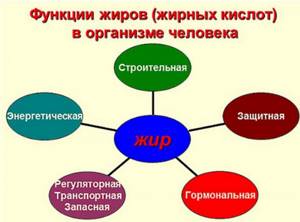
Fats, or lipids as they are also called, are structurally composed of carbon, oxygen and hydrogen. They are very important and valuable substances, as they are part of cell membranes and various intracellular formations, including cell nuclei.
Lipids perform many important functions in the body: they protect vital organs from hypothermia and mechanical damage, serve as suppliers of fat-soluble acids, and can provide a variety of biological processes, including muscle contraction, as an energy source.
The normal fat content in the human body is 12-15%, but most often this figure is slightly higher. A smaller part of lipids is contained inside the cells of all organs and tissues, a large part is found in the cells of adipose (adipotic) tissue. More than 95% of fat comes from triglycerides, which are the main form of fat storage in the body.
Fats are great for creating large energy reserves. In addition to the high calorie content - the oxidation of 1 gram of fat releases 9.3 kcal of energy (38.9 kJ), while the oxidation of 1 gram of carbohydrates releases 4.1 kcal (16.1 kJ) - they are stored in the form of anhydrous fat drops. At the same time, for every gram of stored glycogen there are 3-4 grams of water associated with it.
Regular exercise has a significant impact on the amount and distribution of fat in the body. As a rule, the overall percentage of fat inside the body decreases, but at the same time its content inside the cells of those organs and tissues that actively function during work, for example, intramuscular fibers, increases. In addition, physical activity aimed at developing endurance (for example, long-distance running) increases the ability of muscles to oxidize fat.
How to properly run to lose weight
There are several forms of aerobic activity that affect how long you run. All of them are tied to the maximum heart rate:
running at low intensity (jogging); running at moderate intensity; running at high intensity; interval running (alternating fast and slow pace).
Let's figure out which type of running gives the best results.
Jogging for weight loss
Low intensity running is the most common option. Duration 45 minutes-1 hour, heart rate – 60-75% of maximum. This is 115 to 145 strokes. At this rate, energy initially comes primarily from glycogen (an easily digestible sugar stored in the liver). This can last a long time, from 30 to 45 minutes depending on whether you consumed carbohydrates. And only when the body uses up glycogen, it will take on fat cells. Therefore, running for less than 50 minutes often does not make sense.
Running at medium intensity
Run at an average pace with a heart rate of 75-85%. Duration 30 minutes. In this case, the body uses mainly carbohydrates, and if you run at this pace on an empty stomach, then instead of fat mass, muscle mass will be lost. This type of aerobic activity is more suitable for developing endurance than for losing weight.
High intensity running (sprint)
Speed running with a heart rate greater than 85% can only be used by athletes with a high level of physical fitness. The fact is that the heart receives a high load and this can be deadly for beginners. Moreover, high-intensity running cannot be used for weight loss, since the body receives energy only from the breakdown of consumed calories, fat mass remains intact.
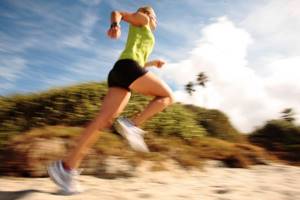
Interval running for weight loss
Alternate jogging and running at an average pace. In the interval of high activity, the pulse should be at the level of 70-85%, in the low - at the level of 40-60%. Duration 30 minutes. During interval running, the body is provided with energy obtained from carbohydrates. But here the main goal is to speed up metabolism and start burning fat throughout the day.
A number of studies have shown that interval running provides higher fat burning rates than jogging. If at low intensity the process of burning fat occurs only during training, then with interval training this process continues even after it ends (up to 48 hours!).
To calculate your running intensity, you need to calculate your own maximum heart rate threshold. To do this, subtract your age from the number 220. For example, for a 27-year-old girl:
220 – 27 = 193 is the maximum heart rate.
Next, let's calculate your heart rate for weight loss when running at low intensity (60-65% of maximum)
193 / 100 * 60 = 115 beats per minute is the lower threshold (60%); 193 / 100 * 75 = 145 beats per minute is the upper threshold (75%).
Running at home on the spot or on a treadmill gives good results. Both types allow you to burn calories effectively, but are less traumatic for joints and tendons.
Running in place at home for weight loss
Jogging in place has a major advantage over other types of jogging. With it you will not depend on the gym's operating hours and weather conditions. And fresh air can be ensured by working out on the balcony at home. But it also has disadvantages - lower activity, which means weight loss occurs more slowly, as well as a greater load on the lower leg muscles. Therefore, this type of running is not suitable for those who want to make their calves smaller.
To achieve maximum effect, pay attention to the following points:
lift your legs off the floor as high as possible; the back is straight; the stomach is pulled in during the lesson; arms are bent at the elbows and move as during normal running; inhale through the nose, exhale through the mouth.
At home, there is another option for jogging - running up the stairs in the entrance. Which is especially true if you live in a multi-story building.
Running up stairs for weight loss
Running up the stairs is not only as effective as regular jogging on the street, but is also superior in terms of muscle load and the number of calories burned. By training this way, you can burn up to 750 calories per hour!

How was my month of morning jogging?
I haven’t had a good relationship with running since high school. Physical education often spoiled my diary as an excellent student, because I didn’t earn more than a B. And even these jokes from my classmates... You see, it seemed to them that I was running somehow wrong, very funny. And the most terrible moment for me was walking in such an undressed manner, disheveled, out of breath, red, past the boy I liked then. Brr. I was sure that running was a real mockery. But I wasn’t going to voluntarily mock myself.
On your marks…
This continued until last year, when, inspired by Dmitry Pokrevsky’s blog, I finally decided to go jogging. And fell in love. Not right away, of course. The first time was terrible - shortness of breath, legs falling off, pain in the side. And I still considered myself athletic and not overweight! Of course, I didn’t get any pleasure. But I charged myself with the first attempt. Then there was one more time. And further. That's how I got involved. But in the fall, jogging stopped - there was no way I could get outside on a cold, cloudy morning.
And now spring and warmth have come again. Already in April I resumed jogging, but somehow irregularly. Either I want it or I don’t want it. And then I decided to give myself a challenge - run six days a week, with one day off. To be even more motivated, I bought some nice sportswear from Decathlon and announced my intention on my Facebook wall. That's it, the fighter is ready!
Attention…
I decided to run early in the morning, around 6am. Firstly, the nature at this time is amazing - it’s quiet, the birds are singing, there’s not a soul on the street. Secondly, you immediately get a boost of energy for the whole day. And after running in the morning, you don’t rack your brains about when to find time for sports.

I was lucky with a place to run - beautiful terrain and nature
I set a plan for myself - one and a half kilometers every day. Yes, it's not much, but my goal was not to become a marathon runner or lose weight. For me, running is about health, clearing my thoughts and time alone with myself. Yes, and I knew: if I do it through force, I’ll soon quit. Tested more than once. Therefore, I took the phrase “fast is slow, but constant” .
The first two weeks I got used to it. I learned to monitor my breathing again - it turned out to be difficult. But soon I found the ideal option: breathe rhythmically in four counts. I don't think this is a universal rule, but it worked for me. Moreover, I came to this conclusion myself, listening to my body. And later I read that breathing this way is the most correct and comfortable. Inhale for four steps, exhale for four steps.
March!
Most of the absences were in the first two weeks and mainly due to the weather. It was raining, and I'm a terrible hater of cold and slush. Although, sometimes I wake up, the weather is beautiful, but I’m not in the mood for running. In such situations, one of the following usually saved the day:
- I remembered that I had a challenge, after all, and I signed up for it myself
- I persuaded myself to just go out onto the football field and sit. And only if I want, then I’ll run. And more often than not, I actually ran.
- I remembered the feeling of a clean head, free of cockroaches and debris, after a run. I love this magical state.
From mid-May, stable warmth began, and I got so used to running that in the morning the option of “walking or walking” no longer arose. There was only one option - “run!” . Plus, new habits came - after running, I had conversations with myself, unraveled the questions that tormented me, and then sat down to meditate. Thanks to such procedures, any problem was solved and the right idea appeared.
Once, for a test, I ran a little more - two kilometers. I tried it. Easily. But I realized that I don’t need it. I don’t want to provoke myself into thinking about quitting. I know myself: any obligation means “goodbye, sport.” But one and a half kilometers is ideal for me, exactly five laps around a football field.
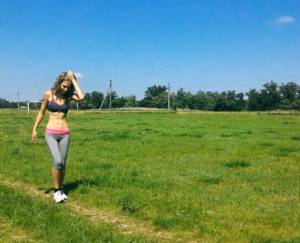
When I learned to breathe correctly, the process of running itself began to resemble dynamic meditation. Most days I just zone out. The body is running, but I’m all in my thoughts. And everything happens very smoothly - there is no tension, no stops, no desire to take a break. You just run, almost automatically. And thoughts work for you. Sometimes on the way to the football field I thought about questions that haunted me. It’s amazing, but often on the last lap of a run I suddenly heard the answer. It’s hard to believe - I didn’t believe it myself before. But it works.
A couple of times it was physically difficult to run – my side hurt or I felt tired. And it was clearly related to nutrition. As soon as I ate something heavy in the evening or had dinner later than two hours before bedtime, I instantly felt it on my morning run. I didn’t notice any other reasons, just food. Even if I didn’t get enough sleep, it didn’t affect the quality of my running in any way.
Jogging is an ideal opportunity for me to be alone with my thoughts. That's why I don't listen to music, audiobooks, or courses. They would only distract me. The only thing that chatters during my runs is the Runtastic app. Tells me information about mileage, calories burned, running pace. In general, the application is very convenient and, importantly, free. Counts any activity, including walking and cycling. He also periodically sends reports by email with messages like “You burned 1000 calories, now you can treat yourself to a slice of pizza or chocolate.” Very nice! Rantastic is the sponsor of my unscheduled feasts.
Beyond the finish line
According to the calculations of my trusty Runtastic app, in May I ran 31 km, walked 44 and biked 63. I missed running nine times throughout the month - four of which were legal days off. This is a great result for me. Moreover, I spent only three days without physical activity at all. Usually, if I felt that I didn’t really want to run, I just walked. Or I went for a bike ride in the evening. And sometimes I had so much energy that I combined all three activities - running, walking, and cycling.

What did morning jogging give me?
- The psychotherapeutic effect - I have already described this many times and am ready to glorify running as a cure for negative emotions for as long. I have noticed more than once that as soon as you skip a run, you feel a lack of clarity and purity of thoughts. Running really helps as much as a psychotherapist. Many issues resolve themselves, you just have to open up to the incoming information.
- The legs and thighs dried out perfectly. The “rollers” no longer hang over the knees, as they did before. Never before have my legs looked so slender.
- My skin was covered with an even, beautiful tan – I ran until 9 am, when the sun’s rays are not yet aggressive. Now they ask me which islands I returned from.
- My butt got very pumped up . Oh yes, I've been waiting for this forever! There is still a long way to go to being in ideal shape; strength training is needed here, but the difference “before” and “after” running is obvious.
- I started eating breakfast healthier. After sports, you usually crave healthy food to consolidate the effect of jogging. That’s why I’ve been making smoothies for breakfast for almost the entire month – it’s a great aid to digestion!
Of the minuses, I can name only one thing - I began to look like a skeleton. I was thin even before running, but towards the end of May it completely went beyond the limits. The first thing that caught my eye were the hands. Instead of a biceps, there was a stick, and on top of it was a leather cloth. Of course, this is my mistake - no one has canceled strength training! At least banal push-ups every day will do. After this realization, I immediately introduced exercises for my arms, abs and legs.
After a month, I became addicted to running. Got hooked on him. Moreover, it is the effect of cleansing from bad thoughts that attracts. For example, a couple of days ago I felt sad. I think, let me just sit in nature, breathe some air, and think. I came, I’m sitting. Not that. Okay, I'm just looking around. Let's go. Not that. What if you run, even just a couple of meters? I ran around. One and a half kilometers. And such lightness, such purity of thoughts. Now I know that running helps in any case. Whether it’s bad or good now, it will only get better after running.
Thanks for reading!
Do you like our texts? Join us on social networks to stay up to date with all the latest and most interesting things!
Instagram Facebook
How to start jogging in the morning to lose weight
The main reason for dissatisfaction with your figure is excess weight formed by fat. Losing weight is complicated by the fact that the body perceives fats as the main energy reserve.
Note! In order for the body to begin to consume reserves, it must run out of the main building material - proteins. In this case, the body converts reserve fats into energy. . For maximum energy consumption, slow running is suitable, after which a person gets less tired
Thanks to the slow pace, fat is consumed faster with minimal stress on the body
For maximum energy expenditure, slow running is suitable, after which a person gets less tired. Thanks to the slow pace, fat is consumed faster with minimal stress on the body.
Jogging on an empty stomach or after breakfast?
Almost every person who decides to jog in the morning wonders whether it is worth eating before exercise.
Morning jogging on an empty stomach is useful for losing weight, but a minimal amount of sugar in the blood can play a cruel joke on a person. Sugar deficiency can lead to loss of consciousness.
Important! Before training, you should not have a heavy breakfast.
Before training:

Morning jogging on an empty stomach is good for weight loss
- You need to replenish your fluid supply. A large cup of tea with sugar is suitable for these purposes. Water will help reduce blood viscosity, sugar will immediately be broken down for energy.
- Depending on the intensity and duration of exercise, you need to adjust the amount of breakfast before jogging. The longer and more energy-intensive the workouts are, the more energy the body will require. In such cases, you can supplement the tea with cereal cookies or light porridge.
Note! During sleep, the blood becomes thicker and more viscous. If a person goes for a run without replenishing the water deficit, he creates additional stress on the heart, which will be forced to pump thick blood at an accelerated rate.
Such stress is fraught with cardiovascular diseases.
A nutritious breakfast containing carbohydrates, vitamins and proteins must follow your workout to replenish the lack of nutrients in the body.
A small snack is necessary before any activity at any time of the day (meal must include a drink or consists only of drink).
What time should you run?
Most people give up morning exercises due to the difficulty of getting up in the morning. To make the task easier, you can start going to bed 15-20 minutes earlier.
Note! Intense exercise after waking up is harmful to the heart. To reduce the load on blood vessels, you should do a short warm-up before jogging.
Warming up will help warm up your muscles before training and prepare your heart for the load.
Jogging at any time of the day is contraindicated:
- people with severe heart and vascular diseases;
- people with severe spinal injuries.
If you want to start running with such diseases, you must consult a doctor.
If jogging is done to strengthen the body, the time of exercise does not play a significant role. Running for weight loss will be most effective in the first half of the day.
Why sport and not diet?
They tried to instill a sports lifestyle in us at school and college. But for some reason we didn’t always like physical education lessons. And only as they grew up did they begin to understand that “a correct and active lifestyle” are not empty words
This means a healthy heart and blood vessels, a fit figure, slower aging of the body and, importantly, a more positive attitude towards life. Sports lift your spirits much more than a good movie or glass of wine.
It’s not for nothing that the concept of depression is not familiar to athletes.
Sports (amateur) can also be different. Today fitness is very popular: but it is not accessible to everyone and there is not always time for it. But even a very busy person can afford to run in the morning. Why is running better than dieting? Everyone, because it doesn’t easily burn excess fat, but it also helps to “build muscles” - something that fitness trainers are striving for. As a result, the figure becomes toned, unnecessary “folds” disappear, the body becomes more resilient, the musculoskeletal system is strengthened, metabolism returns to normal and blood circulation improves. At least for one of these results, running is worth doing.
Running to fight cellulite
This type of cardio exercise works great against orange peel and eliminates problems in the buttocks area. A large number of different programs have been developed, but to achieve a consistent effect, we recommend that you first contact trained trainers.
Training program
One of the programs is designed for 4 weeks. Training can be done at any time convenient for you. There must be two days for rest.
First week. On the first day of classes, running should last no more than 10 minutes. After this, 2 minutes of fast walking, then jogging again for about 5 minutes. Increase subsequent sessions by 3 minutes.
Second week. The duration of the workout is 20 minutes with a one-minute rest break. Finish the lesson with a maximum sprint run (3 minutes).
Third week. Gradually increase the duration of your runs; by Friday you should be running for half an hour.
Fourth week. You need to immediately start running for 30 minutes, increasing the time by 5 minutes every day. By the end of the week, the duration of the workout should reach 50 minutes.
Exercises at home
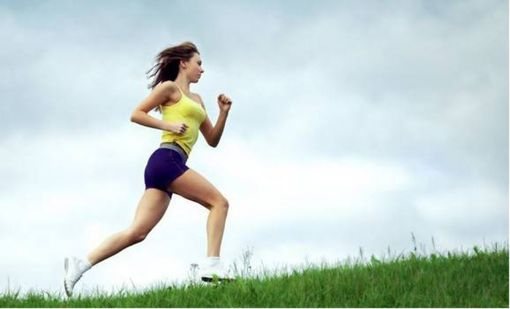
People who lead an active lifestyle always have excellent shape. For each of us, the day begins with a rush to work and various family matters. In modern life there is practically no time to run in the morning.
As an alternative solution, running at home comes to the rescue, replacing classic outdoor workouts. They have a good effect on the human body, calorie burning is activated, the functioning of the heart and muscles throughout the body improves.
Interval training
Interval running is one of the most common weight loss methods. It consists of running with different loads and speeds. There are three main types of interval running:
- repeated;
- interval sprint;
- tempo.
The scheme is as follows:
Day 1 - a short warm-up, alternating running (fast - about 200 meters, then 3 minutes slow).
Day 2 - warm-up, jogging up to 800 meters (the intervals remain the same).
Day 3 - alternation (fast - 600 meters, slow - 400 meters).
Benefits of jogging and standing still
Such activities are the best option for mothers on maternity leave. Remember the basic rules:
- Lift your feet off the floor as high as possible.
- Keep your back straight.
- The stomach should be pulled in and the arms should be bent at the elbows.
- Shoulders relaxed.
- You should breathe like this: inhale through your nose and exhale through your mouth.
If you run 10-15 minutes a day, then within a month you will see the first positive results.
steps
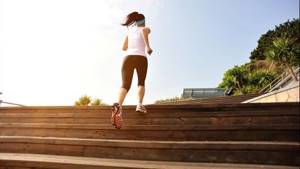
Running up stairs is more effective than usual in that it puts stress on the leg muscles and burns up to 850 kcal. It is enough to do a few simple warm-up exercises and then run up the stairs for 30 minutes.
In this case, the muscles of the legs and buttocks are involved, which helps eliminate orange peel in problem areas.
httpv://www.youtube.com/watch?v=embed/g0lokVmNMDo
How to get back to running
After a break, the body is not ready not only for training in the same volume, but even for some less intense loads.
The good news is that those who trained regularly and for a long time before the break will find it easier to return to running. But both trained and untrained need to engage carefully, in small volumes and with low intensity.

We include the body in work gradually, this will relieve injuries and overtraining
Walk vigorously
If the break was due to injury, then it is better to return to running through walking. You need to walk for 45-60 minutes and not at a walking pace, but at an intense pace, at which the pulse should be somewhere around 100 beats per minute.
The heart and muscles will begin to remember the load, and at the same time you can check whether the pain remains after the injury. If it is not there, you can introduce running.
Read on the topic: Walking: types, benefits, calorie consumption
If there was no injury, but the break was long, it is still better to alternate between jogging and walking.
In the first week of training after a break, try the beginner program:
- 1 minute run
- 2 minutes of intense walking
And so on for 30 minutes.
Over the next week, increase your running interval to 2 minutes with the same walking interval for 2 minutes. Then, focusing on how you feel, shorten the walking interval and eliminate it altogether, but don’t hesitate to take a step if you want.
Increase volumes gradually
If the break is not associated with an injury or the injury was not serious, and there is no more pain, then you can immediately return to running at low intensity, without intervals, slides, etc., and, of course, you will have to continue with lower volumes.
If the break lasted more than 10 days, start with 70% of the previous volume. If from two weeks to a month – 50% of the previous volume. Two months is less than half of the previous volumes. If the break lasts more than three months, start from the very beginning (see point above).
And most importantly, don’t forget the 10% rule: you need to increase volumes gradually, each new week + 10% of the previous week’s volume. For example, if you ran 20 km in one week, then next week you should run 22 km. On the next one - 24-25 km, etc.
Podcast on the topic: Running volumes, or how much you need to train for a marathon
Plan your next running season
Try to analyze the moment when you had to take a break from running. If it is not related to life circumstances, then the problem is most likely too much volume, or too high an intensity, or insufficient recovery, or incorrect technique.
In order to properly distribute the load after a break and not step on the same rake, it is better to find a running coach who will conduct training with you, or at least create a training program with him.
A training program can be purchased, created in a running app or using sports gadgets. For example, in the running app Nike Running Club, you can plan a training program for races from 5 to 42 km.
A more difficult program can be selected using an account on Polar Flow and a sports watch that will monitor the condition of the body.
Check your running technique. Again, it is best to contact a coach so that he can evaluate the technique from the outside. You can ask a friend to record you on video and try to analyze the mistakes yourself. You can also contact a running lab.
Include a massage (or at least self-massage), a sauna or bathhouse, Pilates or yoga, and stretching in your recovery program.
Read on topic: 5 rules of long-distance running technique
Add security and security forces
Strength training will help you avoid future injuries, increase strength and explosive endurance, and develop the muscles that work when running. And add variety to your workouts.
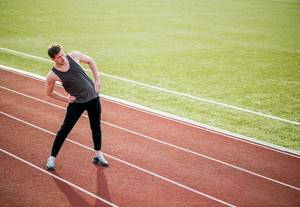
A good training plan always includes SBU and other exercises.
- It is better that strength training for runners be part of the preparation and included in the training plan.
- Strength training should be repeated 2-3 times a week and take at least 30-40 minutes of time.
- Strength training can be done in the gym on machines, with expanders and elastic bands, and with your own weight. If you have weights, focus on light weights and high repetitions.
- If you don't know where to start, listen to our podcast about strength training for runners.
- Special running exercises are a lifesaver for a runner; they will help you hone your technique, develop coordination, and strengthen your muscles and ligaments. Check out our selection of 50 developmental exercises for runners.
Add cross training
This means periodically replacing running with other cyclic sports, for example, cycling, swimming, and the same strength exercises.
- Swimming and cycling are types of exercise that develop the cardiovascular system no worse than running. They are ideal if you feel sore, if you have a minor injury, or if you don’t feel like running.
- Strength training in this case can also be considered as an alternative training to regular running. You can try circuit strength training to keep your heart rate high.
How can feelings help you lose weight?
Feel the taste of classes! To do this, you must be comfortable during them. Choose comfortable shoes, a pleasant place to run, and a time that fits harmoniously into your daily schedule.
You will definitely lose weight when you enjoy running. If you feel more comfortable working out than at the dinner table, then you won't be overweight.
A lightweight body without excess weight can bring joy from the feeling of oneself. When you acquire such sensations, more than one season of training will pass. Therefore, I ask those who are impatient not to start this matter.
Having reached a state of lightness in the body, remember it and try to maintain it. If you like it, then you will no longer want to be overweight and clumsy.

The Best Types of Running for Weight Loss
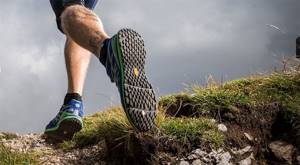
If you're just learning to run for weight loss, you probably don't yet know that there are different types of it, each of which has its own nuances. Let's look at them.
Simple
These are short or medium runs at medium speed. They don't have to be particularly complicated. Example – 5 km at moderate speed.
Progressive
Here you start the race at an average speed, but over time you accelerate and run faster. An example is 5 km at medium speed, and finally 1.5 km at fast speed.
Long
As you move towards your maximum potential, increase the distance of your runs to improve your endurance. It may be difficult to increase the length each time, but remember that the real workout begins when you step out of your comfort zone. Example – 12 km at average speed.
Interval
Here we combine periods of very fast running with race walking or jogging. For example, sprint for 30 seconds at maximum speed, then run slowly for 2 minutes. Repeat 5 times. If you are not very prepared, then we run 15 seconds of intense sprinting and 40 seconds at a slow pace. Repeat 5-15 times.
Fast
This is not ideal for a beginner because it requires you to run at top speed for as long as possible. For example, we run 5 kilometers at the highest possible speed.
Almost everything depends on speed: the faster you run, the more calories you burn. Here's the proof. A man who weighs 75 kg burns 298 calories during a 30-minute run at 8 km per hour, but the same person will burn 372 calories if he runs the same amount at 10 km per hour.
Running uphill
Obviously, here you will have to run up an incline to achieve high intensity. It is advisable to rest between intervals - we run 10 approaches uphill for 45 seconds, and between runs we rest for 1-2 minutes.
Interval running for weight loss
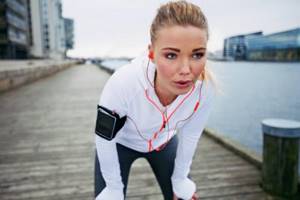
So, what running style is best for weight loss? Interval running for weight loss is undoubtedly better because when you run fast, you create a good stimulus for the muscles, thereby getting the maximum effect in a short time. The main thing in every exercise is intensity, whether your goal is to lose weight or gain muscle mass.
This is mathematics. Running quickly burns many more calories in a shorter amount of time, making it easier to incorporate running into your program. Plus, after intense work, your muscles need to regenerate, which creates that metabolic boost that will allow you to burn more energy throughout the day.
If your comfortable speed is 8 km per hour, then try to run faster than that, at least for one minute. If this sounds difficult, then you should remember that you are not running in a competition, but trying to get your heart rate up and your metabolism up. You are here to take control of your own health. You can do so much more than you ever expected.
Here are some tips
Don't Forget to Warm Up: When you're running for speed to lose weight, you'll want to warm up your muscles to prevent damage. Basic running should be performed at a comfortable speed. You shouldn't be out of breath, you should be able to communicate (and here's a good opportunity to ask a friend to run with you!)
Work period
Once you are warmed up, start running. Move at maximum speed for 15 seconds, followed by 45 seconds of slow walking. Then run fast again and so on. Try to complete up to 15 intervals, which should be within 15 minutes of exercise.
It is important not only to warm up the muscles, but also to calm them down properly. After your run, don’t forget to walk for 10 minutes at a leisurely pace so that your heart rate naturally drops.
If you're a beginner, it's important not to overdo it. Run once a week to start.
When you understand what speed suits you, you can start running more often, and you can increase the intervals - run for 20 seconds and rest only for 40.
Interval running
In fact, it is best to keep the load constantly high, but interval running has recently gained popularity for weight loss. What it is? The essence of interval running is to periodically decrease and increase intensity, that is, running speed. This is especially useful for beginners who can't run for 40 minutes like they're being chased by a mad dog.
If you're not going to compete in the Olympics, don't run until you drop. The main condition for long-term exercise is to have fun.
It is quite difficult to schedule interval running for weight loss without knowing you; the individual program will be different in each case. General principles to know:
- to lose weight you need to run for at least 40 minutes straight;
- the first five minutes will be warm-up, at an easy pace;
- no need to stop between accelerations, go to a calm pace to catch your breath and catch your breath;
- the frequency of fast and moderate pace can be 100 meters;
- do not stop immediately after finishing your workout, walk for a few minutes.
An approximate schedule for beginners can be seen in the table below. But in the first two weeks it is better to get used to the so-called health jogging.
| minutes | 0 — 5 | 5 — 10 | 10 — 11 | 11 — 15 | 15 — 20 | 20 — 21 | 21 — 30 | 30-35 |
| pace | Easy warm-up run | Average pace | Maximum possible pace | Easy | Average | Max. | Avg. | Recreational walking |
I repeat once again that this chart will only be useful to beginners. If this seems too easy, run in 1-minute intervals (fast pace, medium pace).
As you train, you will be able to handle increasingly greater loads. In this case, there are three options for developing the results:
- speed up your pace, and in a few months you will be running at maximum speed for all 40 minutes;
- increase your jogging time to 90 minutes, which will also have a positive effect on rapid weight loss.
- develop in both directions.










